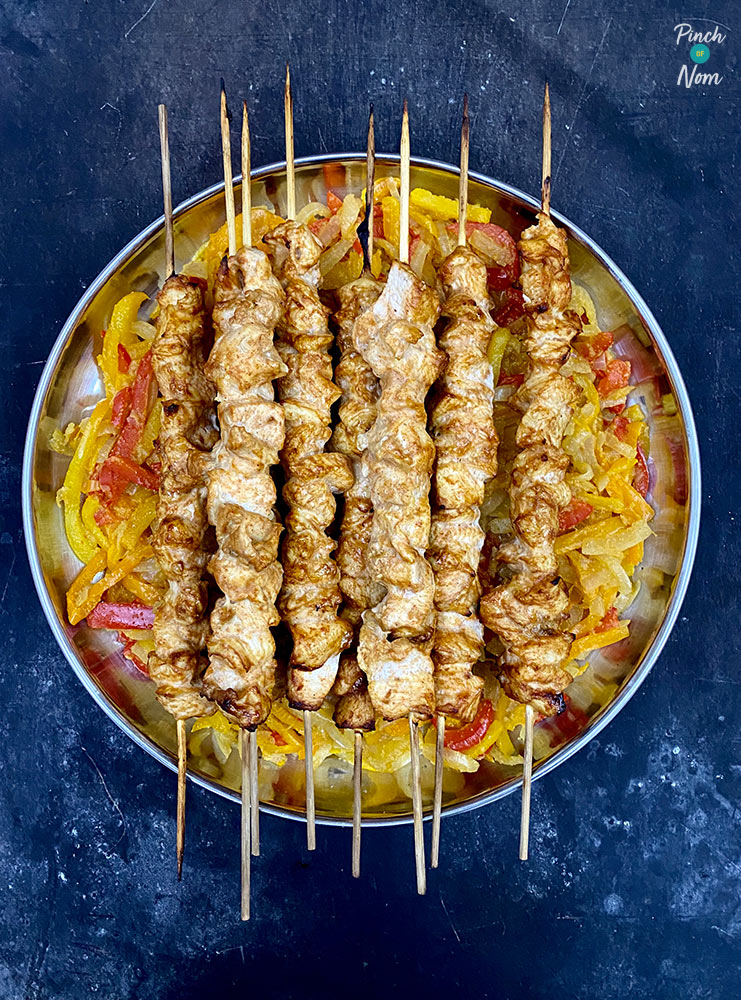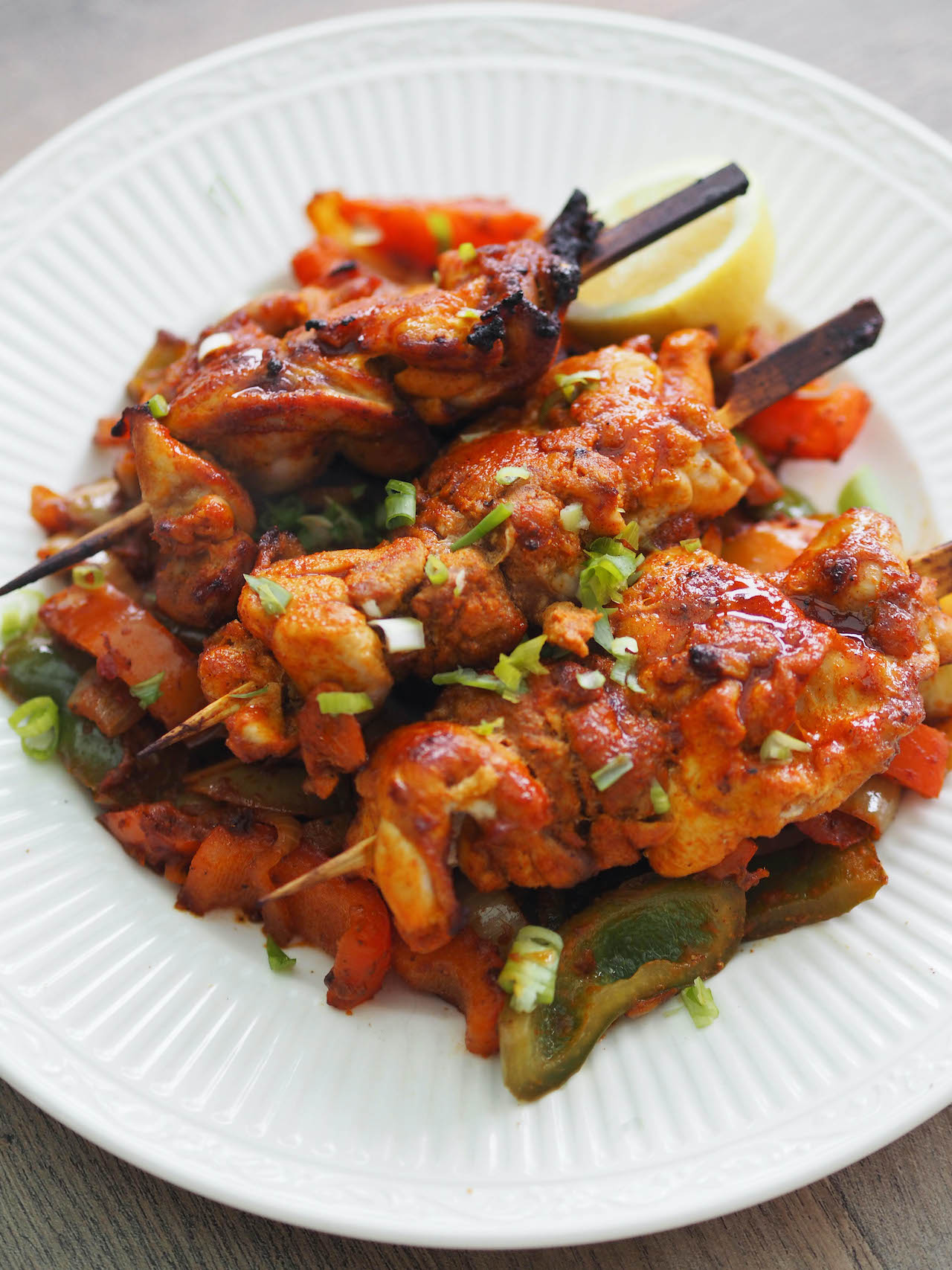The History of Shashlik & Shashlik Recipe

The term "shashlik" typically refers to a popular dish of skewered and grilled meat, usually marinated before cooking. While the specific origins of shashlik are not definitively documented, it has a rich history across various cultures, particularly in Central Asia, the Middle East, and Eastern Europe.
- Ancient Roots:
The roots of shashlik can be traced back to ancient times when people discovered the practice of skewering meat and cooking it over an open flame. This method of cooking was not only practical but also enhanced the flavor of the meat.
- Central Asian Influence:
Shashlik is often associated with Central Asian cuisine, where it has been a traditional dish for centuries. Nomadic tribes in the region, such as the Turkic and Mongol peoples, relied on portable and quick-cooking methods, making skewered meat a practical choice for their lifestyle.
- Persian Kebabs:
The Persian Empire, with its rich culinary history, also played a significant role in the development of skewered and grilled meat dishes. Persian kebabs, which share similarities with shashlik, were made using various meats and marinades, and this culinary influence spread to neighboring regions.
- Spread to the Caucasus and Beyond:
Over time, the popularity of skewered and grilled meat spread to the Caucasus region and the surrounding areas. Different cultures in the region adapted the dish to their tastes, using local spices and marinades to create their own versions of shashlik.
- Shashlik in Eastern Europe:
In Eastern Europe, particularly in countries like Russia and Ukraine, shashlik became a beloved dish. The influence likely came from the interactions and cultural exchanges between Central Asian nomads and the Slavic peoples.
- Modern Variations:
Today, shashlik has evolved into various regional variations, each with its unique marinades, cooking methods, and accompaniments. The dish is enjoyed in many forms, from the traditional lamb or beef skewers to chicken, pork, or even vegetarian options.
- Cultural Significance:
Shashlik is not just a meal; it often holds cultural significance and is associated with communal gatherings and celebrations. The act of grilling skewers over an open flame remains a social activity in many cultures, fostering a sense of community and shared enjoyment of food.
In summary, while the specific history of shashlik may be challenging to trace definitively, its roots can be found in the ancient practice of skewering and grilling meat. Over the centuries, the dish has evolved and spread across various cultures, becoming a beloved culinary tradition in many parts of the world.

Classic Beef Shashlik Recipe;
Ingredients:
- 1.5 pounds (about 700g) beef, cut into 1-inch cubes (use a tender cut like sirloin or ribeye)
- 1 large onion, finely chopped
- 3 cloves garlic, minced
- 1/4 cup vegetable oil
- 1/4 cup soy sauce
- 2 tablespoons red wine vinegar
- 1 teaspoon ground black pepper
- 1 teaspoon smoked paprika (optional)
- 1 teaspoon ground cumin
- 1 teaspoon ground coriander
- 1 teaspoon salt, or to taste
- Wooden or metal skewers
Instructions:
1. Marinate the Meat:
- In a large bowl, combine the chopped beef, chopped onion, minced garlic, vegetable oil, soy sauce, red wine vinegar, black pepper, smoked paprika (if using), cumin, coriander, and salt.
- Mix the ingredients well, ensuring that the meat is evenly coated with the marinade.
- Cover the bowl and let the meat marinate for at least 2-4 hours in the refrigerator. For best results, you can marinate it overnight.
2. Skewering:
- If you're using wooden skewers, soak them in water for about 30 minutes to prevent them from burning during grilling.
- Thread the marinated beef cubes onto the skewers, leaving a small space between each piece for even cooking.
3. Grilling:
- Preheat your grill to medium-high heat.
- Place the skewers on the grill and cook for about 10-15 minutes, turning occasionally to ensure even cooking.
- Check for doneness by cutting into a piece of meat to make sure it's cooked to your liking.
4. Serving:
- Once the shashlik is cooked, remove it from the grill and let it rest for a few minutes.
- Serve the shashlik hot with your favorite accompaniments. It pairs well with rice, flatbreads, or a fresh salad.
5. Optional: Basting:
- While grilling, you can baste the shashlik with any remaining marinade for added flavor and moisture.
Enjoy your homemade shashlik! Feel free to customize the marinade and spices to suit your taste preferences.
I recommend you to watch Shashlik recipe videos I chose for you;
Chicken Shashlik with Gravy Recipe;
Russian Shashlik Recipe;
Ukraine's Shashlik Recipe;
Uzbekistan Style Shashlik Recipe;
Slav Style Shashlik Recipe;
References;
- Kraig, Bruce; Taylor Sen, Colleen (9 September 2013). Street Food around the World: An Encyclopedia of Food and Culture: An Encyclopedia of Food and Culture. ABC-CLIO. pp. 64, 294–295, 384–385. ISBN 9781598849554 – via Google Books. An ancient dish, well known to herders and nomads across a wide swath of the Caucasus and Central Asia, shashlyk became popular in Russia in the mid-19th century after Georgia, Azerbaijan, and part of Armenia were absorbed into the Russian Empire. In those regions, shashlyk originally referred to cubes of grilled lamb cooked on skewers, whereas basturma was the grilled beef version of this dish. But Russians have broadened the term shashlyk to mean any kind of meat–pork, beef, lamb, venison–cut into cubes, marinated for several hours, threaded onto skewers, and cooked over hot coals.
- Pokhlebkin, William Vasilyevich (2004) [1978]. Natsionalnye kukhni nashikh narodov (Национальные кухни наших народов) [National Cuisines of Our Peoples] (in Russian). Moskva: Tsentrpoligraf. ISBN 5-9524-0718-8.
- Culture and Life. Union of Soviet Societies for Friendship and Cultural Relations with Foreign Countries. 1982 – via Google Books. The Russian term, shashlik, has an interesting etymology: it would seem natural for the word to be borrowed from one of the Caucasian languages. But no, the Georgian for it is mtsvadi, the Azerbaijani, kebab, and the Armenian, horovts. Shashlik is a Zaporozhye Cossack coinage from the Crimean Tatar sheesh (spit), brought to Russia in the 18th century, after Field-Marshal Mienich's Crimean campaign. Prior to the 18th century, the dish was called verchenoye, from the Russian vertel, spit.
- Davidson, Alan (2014). Jaine, Tom (ed.). The Oxford Companion to Food. Oxford: Oxford University Press. p. 442. ISBN 9780191040726 – via Google Books.
- Albala, Ken (2011). Food Cultures of the World Encyclopedia. ABC-CLIO. pp. V3:51, V4:35, V4:304. ISBN 9780313376269 – via Google Books.
- American Heritage Dictionary Entry: shashlik
Thank you for reading my article and sharing your time for Shaslik!
#food #shashlik #cuisine #meat #kebab #foodlove #foodinspiration #cooking #chicken




























































